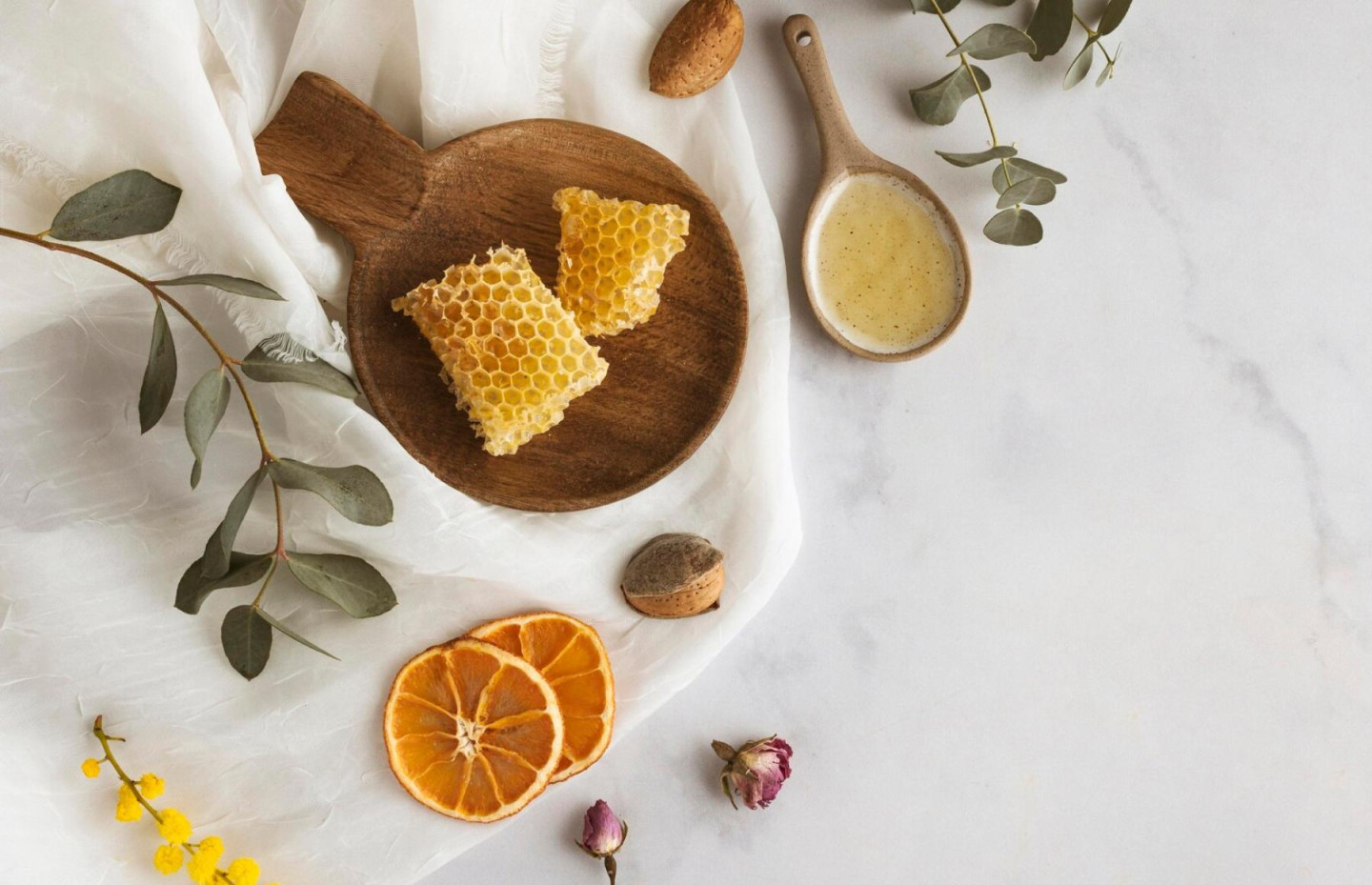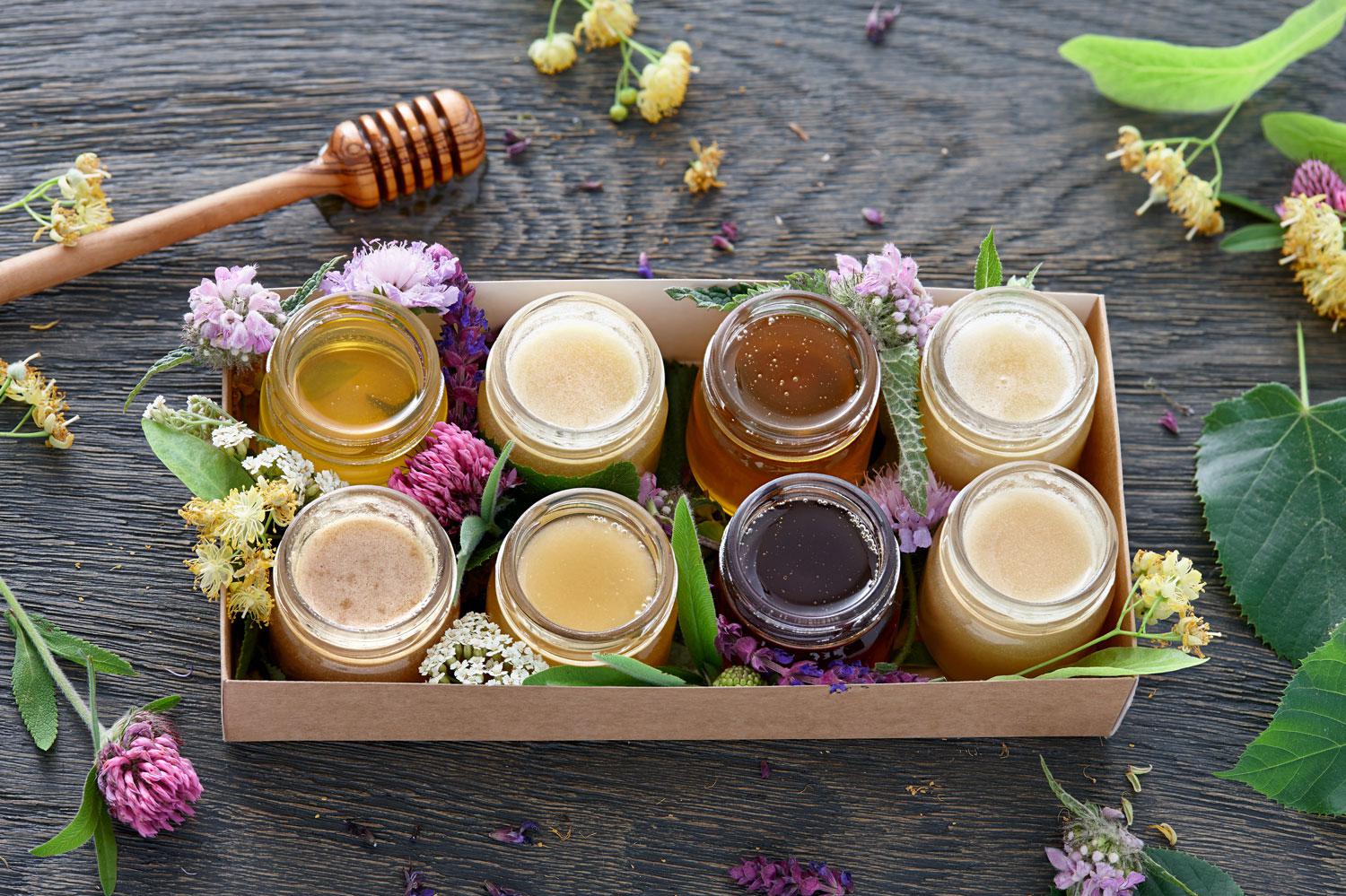
Honey is healthy and tasty, and most importantly, a completely natural product. It is made by domestic bees, and humans hardly interfere in this process. However, in practice, even the most natural honey can be with additives or, for example, unripe. It is not always possible to identify counterfeit honey by eye, but you can check the quality of honey at home. There are at least ten methods available.
- Composition
- Kinds
- How to counterfeit
- 10 ways to check
- How to choose
Elena Sarattseva, deputy head of Roskachestvo;
Olga Kulazhonok, founder of the family apiary “Oli’s Bees”.
What is honey made of?
Honey is good for humans, but it is an allergenic product
Honey consists of almost 80% natural sugars sucrose, glucose and fructose and water. 100 g of product contains 304 kcal, some protein and no fat at all. Honey is rich in almost all beneficial macro- and microelements, especially vitamin C and polyphenols (1), (2).
The main source of honey is the nectar of plants and herbs. During the flowering period honey bees collect it, partially digest it, enrich it with enzymes and place it on the honeycomb. Then follows the ripening stage: excess moisture evaporates from the honey, it thickens (3). The resulting mass is taken by beekeepers – this is natural honey.
The consistency of fresh honey is always liquid or syrupy. But over time, depending on the type, the product crystallizes (candied). This is a natural process, the speed of which depends on the ratio of sugars in the composition, temperature and duration of storage. Natural honey must meet a number of requirements that are specified in GOST (4):
- Appearance: liquid or partially crystallized;
- Scent: without foreign impurities, pronounced and pleasant;
- Water fraction: no more than 20%;
- Sugar content (glucose, fructose and sucrose): not less than 65%;
- Not allowed any mechanical and foreign impurities, as well as fermentation.
The most important condition for quality is that honey must be a product produced by bees, says Elena Saratseva, deputy head of Roskachestvo. The expert recalls that in 2023 there were Amendments were made to the law “On beekeeping”, which consolidated the identification characteristics of honey previously established in GOST and acts of the Eurasian Economic Union. “Before this, a manufacturer could call absolutely any product honey, even if it was actually jam or sugar syrup,” explains Saratseva.
The benefits of honey are in the nectar of plants, says Olga Kulazhonok, founder of the family apiary “Oli’s Bees”. Insects take nutrients from the flora and enrich honey with them. “If bees created honey without human intervention, it has matured and, most importantly, if the manufacturer declares what plant nectar is contained in the honey, then we purchase a natural product,” explains the expert.
Types of honey

There are dozens of commercial names of honey, but there are only two basic types
There are two main types of honey, flower and honeydew.. The difference between them is the origin of the honey plant. Bees produce flower honey from the nectar of various flowering plants. Honeydew is obtained after collecting natural plant juices, which are secreted by deciduous trees and needles (honeydew) or by insects that parasitize them, for example, aphids (5).
The main share of honey in stores and at fairs is flower honey. It can be monofloral or polyfloral. In the first case, the composition is dominated by one honey plant, for example, buckwheat or acacia, in the second there are several of them, without a pronounced dominant.
The most popular types of honey in Europe are linden, buckwheat and flower from herbs. (6). Sweet clover and acacia honey are a little less common. A separate GOST (7) applies for five monofloral honey varieties.
The cost of the most expensive honey in the world is €10 thousand for 1 kg (8). It is collected once a year in Turkey, in a cave at an altitude of 2500 m above sea level. This honey was included in the Guinness Book of Records in 2021.
Linden honey
Natural linden honey is honey made by bees from the nectar of a flowering linden tree. The content of the dominant honey plant in such a product, according to standards, is at least 30%. The color of linden honey is light amber, golden, with possible slight yellowness. The consistency is thick syrup. The aroma of linden honey with pronounced floral notes and linden dominant. It tastes very sweet and pleasant. A slight bitterness is allowed, which quickly passes. Linden honey, according to Kulazhonok, is a noble variety, so it is most often counterfeited.
Buckwheat honey
Buckwheat honey is obtained after bees collect nectar from buckwheat flowers.. It is easy to identify buckwheat honey visually – it always has a dark shade, from amber to brown. The taste of buckwheat honey is also sweet, but with some pungency. After consuming buckwheat honey, you may experience a slight sore throat, which should not cause severe discomfort. The aroma is pronounced, with a distinct smell of buckwheat flowers or even buckwheat porridge.
Flower honey
Although this is not a separate variety, in stores or at fairs you can often find this name along with buckwheat or linden (in fact, they are also floral). The word “floral” usually denotes polyfloral honey, which contains nectars and pollen of flowering herbs. The exact composition is determined by the geography of collection and what botanical species are in this area grow.
Sunflower honey
Bees produce sunflower honey from sunflower nectar.. According to GOST, the share of dominant pollen grains in its composition should account for at least 45%. The aroma of this honey is pleasant, with a faint hint of sunflower. The taste is sweet and tart, with a delicate aftertaste, and the color is bright yellow. “Sunflower and rapeseed occupy more than half of the honey market, but they are not popular, so honey from them is often labeled as “floral,” says Olga Kulazhonok.
Acacia honey
The main source of nectar for the production of acacia honey is the flowers of the Robinia tree (popular name – white acacia). It blooms in May–June, the crown is covered with many inflorescences from white to pale pink. The aroma of acacia honey is fragrant and floral, and the taste is sweet, but without any foreign odors or aftertastes. Olga Kulazhonok points out that acacia honey is not candied.
Chestnut honey
Bees begin to harvest chestnut honey during the flowering period of the chestnut tree.. Typically this occurs in mid-summer (8). The honey is dark amber in color with a pleasant chestnut aroma. Chestnut honey tastes sweet and tart, and there is a pronounced bitterness in the aftertaste.
Main characteristics and values for monofloral honey varieties (7)
| — | buckwheat | lime | sunflower | acacia | chestnut |
|---|---|---|---|---|---|
| Color | amber to dark amber | colorless to light amber | light amber to amber | clear to light amber | amber to dark amber |
